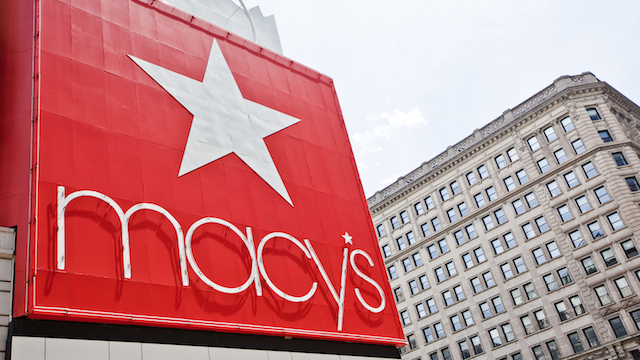With a distinct lack of miracles on 34th Street and, indeed, at Macy’s stores elsewhere, the iconic department store chain has posted yet another set of gloomy numbers.
The Macy’s result reflects a performance that is sequentially worse than last quarter: total sales slipped by 5.2 per cent while comparable numbers dropped by just under four per cent. The acceleration of the decline is made all the worse as Macy’s is up against some fairly soft figures from last year, when both total and same store sales were in negative territory.
The laundry list of excuses, which includes the strong dollar impacting tourist spend at key locations, has yet again been rolled out as a justification for the slide. While there is some truth in these points, they do not tell the whole story and they do not provide an adequate explanation for the sharper deterioration of the company’s top line.
The wider truth is that Macy’s remains a business that is somewhat out of kilter with what modern consumers want. Ranges, store locations, and its general store environment are simply not optimised to deliver; and in an era when consumer spending remains constrained, Macy’s is increasingly losing out.
In fairness, Macy’s has been fairly active in trying to shift its business model with various initiatives, including localising product assortments and improving customer service on the shop floor. However, while these have had some impact they have simply not delivered through in any meaningful way as the thinking around other areas of the proposition, including the store experience and environment, has not been radical enough.
One of the things that has likely held back investment in stores is the fact that Macy’s simply does not have the financial muscle to revamp its entire fleet; and, indeed, it is unlikely that such an approach would provide a strong enough rate of return to justify the investment.
However, the selective upgrading of the estate, especially for key stores, is something the company should pursue. To this end we are encouraged by the decision to review the chain with a view to identifying and advancing potential store redevelopment projects. Notably, this will not just be about making the stores more compelling places to shop, important though that is; it will also be about ensuring that stores are of optimum size and configuration for Macy’s needs.
Although this process will take a while to deliver, we believe that it will undoubtedly result in more store closures – some 35-40 are already penciled in for early 2016 – and a much reduced level of total selling space for Macy’s.
In many ways, this move towards a slimmed down chain is no surprise. It is clear that Macy’s has been struggling with store productivity for some time – which is one of the reasons the company has been proactive about giving space over to concessions or third parties including Best Buy, Men’s Wearhouse, Build a Bear, and its own subsidiaries like Blue Mercury. There is nothing inherently wrong with this approach, but we would caution that Macy’s needs to think about how the whole offer fits together and must also not lose sight of the fact that it remains a retailer that needs to curate its own product offerings to drive trade, rather than rely too heavily on third-party brands.
This is especially true in light of Macy’s plans to drive openings of its Backstage stores. These are off-price shops which will sell clearance products from Macy’s own stores as well as special buys from other fashion and homeware labels. At present, the company has plans to roll out 50 of these over a two year period. It will also, in spring 2016, pilot the concept in existing Macy’s department stores as a shop-in-shop format.
The logic behind the move is sound — namely that Macy’s wants to tap into the growing off-price market. However, we would sound a note of caution that Macy’s must not blur the lines between its mainstream stores and the new concept too much if it is to maintain price integrity within its department stores.
One relatively encouraging area which, in some ways, has added to the pressure to think about the nature of stores and the shape of the fleet, is Macy’s drive to omnichannel. Here, we remain impressed by the plans to enhance in-store pickup and same day delivery options — a move that helps Macy’s compete more aggressively against online pureplays and will allow it to keep on delivering double digit growth through this channel.
As we have noted before, Macy’s can not be accused of standing still. The company is engaged in a lot of activity and has a great many ideas for its future. However, we believe the pace of activity sometimes overshadows the need for focus and resilience in execution. As such, Macy’s advances in a seemingly piecemeal way, lurching from one initiative to the next.
At present Macy’s is delivering neither sales nor profit growth. By thinking in a more integrated fashion and focusing on key initiatives that will deliver, the company stands a much better chance of turning itself around. The current whirlwind of activity might look and sound good in theory, but in practice it is only succeeding in blowing Macy’s further off course.
* Neil Saunders is CEO of retail analysts Conlumino.






